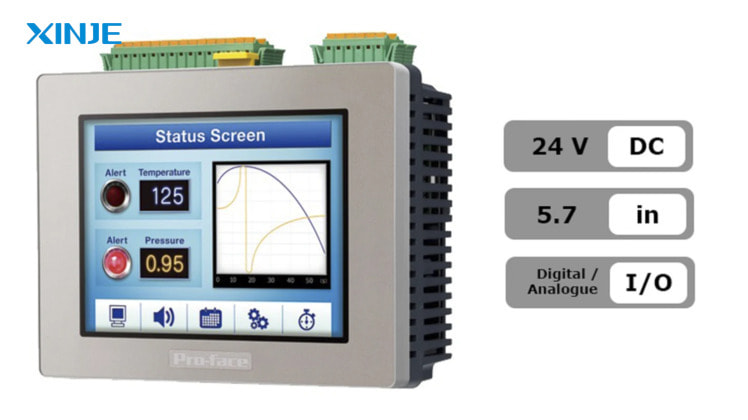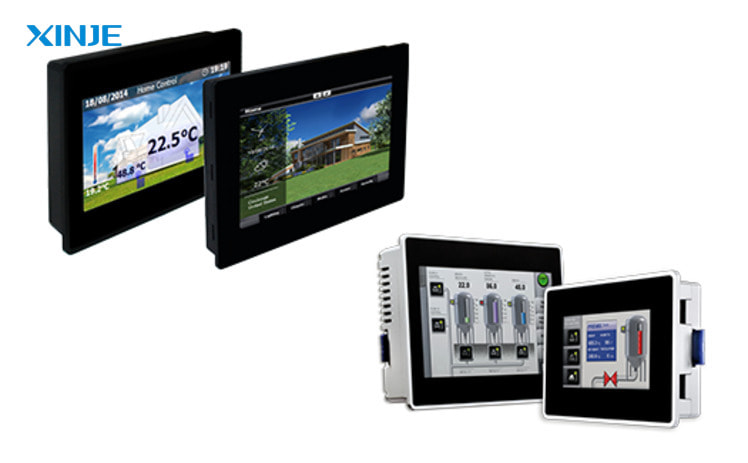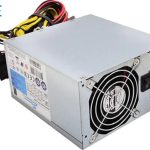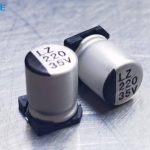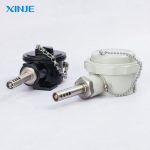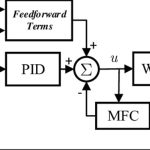HMI Touch Panel is a modern human-machine interface device, helping to connect people with the automation system more easily and intuitively. Instead of having to operate manually with a series of buttons, now all monitoring and control operations are performed with just a few touches on the touch screen. This article will help you understand what HMI Touch Panel is, its structure, operating principle and factors to note when choosing the right device.
What is HMI Touch Panel?
HMI Touch Panel (Human Machine Interface) is a touch screen human-machine interface that allows operators to monitor, control and interact directly with machines, production lines or automation systems.
Instead of having to operate manually via mechanical switches or separate buttons, users only need to touch the screen directly to enter commands, set up or observe the device status.
Previously, HMIs were usually just mechanical control panels with buttons, indicator lights or monochrome displays with physical keys. This type of HMI is only suitable for basic operations with little customization.
In comparison, HMI Touch Panel has an intuitive interface, displays a variety of information (text, charts, images) and allows quick changes to parameters through a few touches. This helps save control panel space, reduce the number of wires, mechanical keys and increase flexibility when programming expansion.
What is the structure of an HMI Touch Panel?
A standard HMI Touch Panel usually consists of 3 basic components:
- Touch screen: The part that displays information such as machine status, production process, charts, warnings, etc. and receives direct touch operations from the operator.
- Control board: The brain that processes data, runs the HMI program, manages the interface and coordinates signals between the screen, memory and communication module.
- Communication module: Responsible for transmitting data between the HMI and peripheral devices such as PLCs, inverters, sensors. Usually supports many communication standards such as Ethernet, RS232, RS485, Modbus TCP/RTU, Profibus, etc.
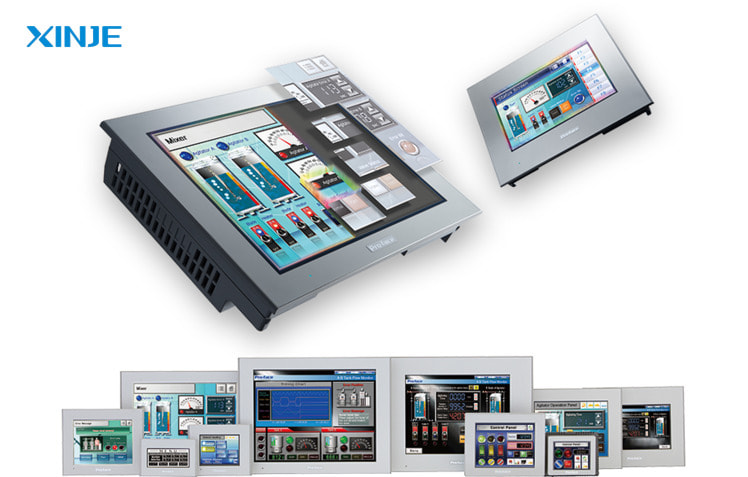

How does the HMI Touch Panel work?
To ensure that the HMI Touch Panel operates smoothly and ensures that data between humans and machines is always transmitted accurately, the internal process is organized into many consecutive steps. Understanding each step will help engineers easily install, check and handle errors when necessary. Below are the 5 steps of the HMI Touch Panel operation:
Step 1: Capture touch operations
The operator touches the touch screen directly (selects buttons, enters values, adjusts parameters, etc.). The touch layer will detect the touch position and transfer that signal to the control board.
Step 2: Process command signals
The control board will process the operation data using pre-programmed HMI software. This operation can be sending control commands, changing setting values or activating a specific process.
Step 3: Send command to control device
The processed signal will be sent through the communication module, transmitted to other control devices such as PLC, inverter or I/O module via communication standards (Ethernet, RS485, Modbus …).
Step 4: Receive feedback data
After executing the command, the control device (PLC, inverter …) will send feedback data (machine status, sensor value, warning …) back to HMI via the established transmission line.
Step 5: Display visual information
HMI Touch Panel will update and display feedback data on the screen in the form of numbers, charts, warnings … Helping operators monitor and make timely decisions.
What benefits does an HMI Touch Panel bring to businesses?
Thanks to its modern design and advanced touch technology, the HMI Touch Panel offers many outstanding benefits compared to traditional control panels. Below are the outstanding advantages that make this device increasingly popular in automation systems.
- Easy and intuitive operation: Thanks to the touch screen displaying a variety of information through graphics, charts and virtual buttons, the operator only needs to lightly touch to monitor and control the device. The intuitive interface helps reduce operating errors and shorten worker training time.
- Save installation space: Compared to traditional mechanical control panels with a series of buttons and indicator lights, the HMI Touch Panel integrates everything in one. This makes the electrical cabinet neater, reduces wiring, reduces construction costs, and is easy to arrange in different positions on the production line.
- Easy programming & expansion: The HMI Touch Panel allows engineers to design the interface, add or remove features or change the display structure through programming software. When expansion is needed, just update the program instead of changing complex hardware.
- Flexibility in changing interface design: HMI Touch Panel allows updating new display screens, changing button layouts, charts or adding features without interfering with the wiring or main board.
- Easy integration with remote monitoring systems: In addition to direct operation, many modern HMI Touch Panel lines also support LAN or Internet connection, allowing managers to monitor remotely via computer or phone.


What are the notes when choosing HMI Touch Panel?
For HMI Touch Panel to maximize its effectiveness, businesses need to consider many important factors before investing. Below are the points to note when choosing the right device for actual needs and operating environment.
- Suitable size & resolution: A screen that is too small will be difficult to observe details, a screen that is too large will waste investment costs. In addition, resolution is also important – a sharp screen helps display charts and parameters clearly, easy to operate.
- Communication standards: Each automation system can use different protocols such as Ethernet/IP, RS232, RS485, Modbus RTU/TCP, Profibus… Therefore, it is necessary to choose an HMI that fully supports the communication standards in use.
- Installation environment: In industrial factories, the environment is often dusty, humid, has strong vibrations or electromagnetic interference from large capacity devices. Therefore, the HMI should have dustproof, waterproof standards (IP65 or higher), durable housing, and well-protected circuit boards to ensure long-term stable operation.
- Reputable manufacturers & technical services: Choosing HMI Touch Panel from reputable brands such as XINJE will help ensure quality, durability and compatibility with other control devices (PLC, inverter, SCADA).
Conclusion
HMI Touch Panel is gradually becoming an inevitable trend in automation systems thanks to its intuitive operation, space saving and easy expansion of features. However, for the device to operate stably, businesses need to choose the right type of HMI suitable for the working environment, communication standards and production requirements.
Understanding the structure, operating principles and factors to note will help you optimize investment costs, operate effectively and be ready to expand when the production line develops.

